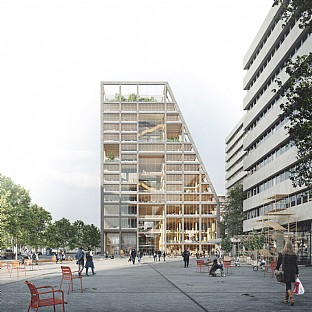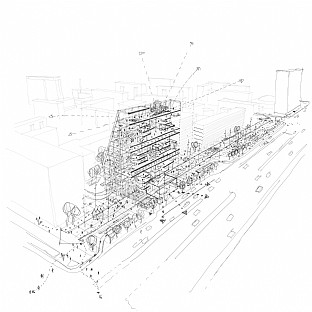The architectural concept centres around a clear, legible form within the cityscape, constructed as a large grid structure to maximize adaptability. This framework facilitates urban connections, inviting city life into and around the building, which acts as a vibrant node linking an activity band with a new urban plaza. Synergies with the cultural activities at Haus der Statistik are supported.
The building's construction employs a hybrid timber-concrete skeletal structure, prioritizing sustainability through the integration of wood and recycled materials, including reclaimed elements from nearby demolition sites. Slim timber ribbed ceilings rest on laminated timber beams and solid core walls, with cross-laminated timber panels providing structural integrity. A high proportion of mechanically joined components allows for straightforward assembly and potential disassembly, aligning with circular construction principles. The façade incorporates strategically placed planters, creating a lush green layer over the precise grid, enhancing both aesthetics and well-being.
Landscaping is integral, with a green inner courtyard forming part of a continuous sequence of green spaces. Vegetation climbs the open structure, connecting urban green areas and culminating in a roof terrace with a roof garden and event space. Green mobility is prioritized with bicycle parking and direct access from cycle paths. The design promotes natural ventilation through strategically placed recesses and incorporates biophilic elements throughout. This approach not only minimizes the building's environmental footprint but also creates a healthy and engaging environment for both employees and the public, establishing a new benchmark for sustainable and community-focused public spaces.






